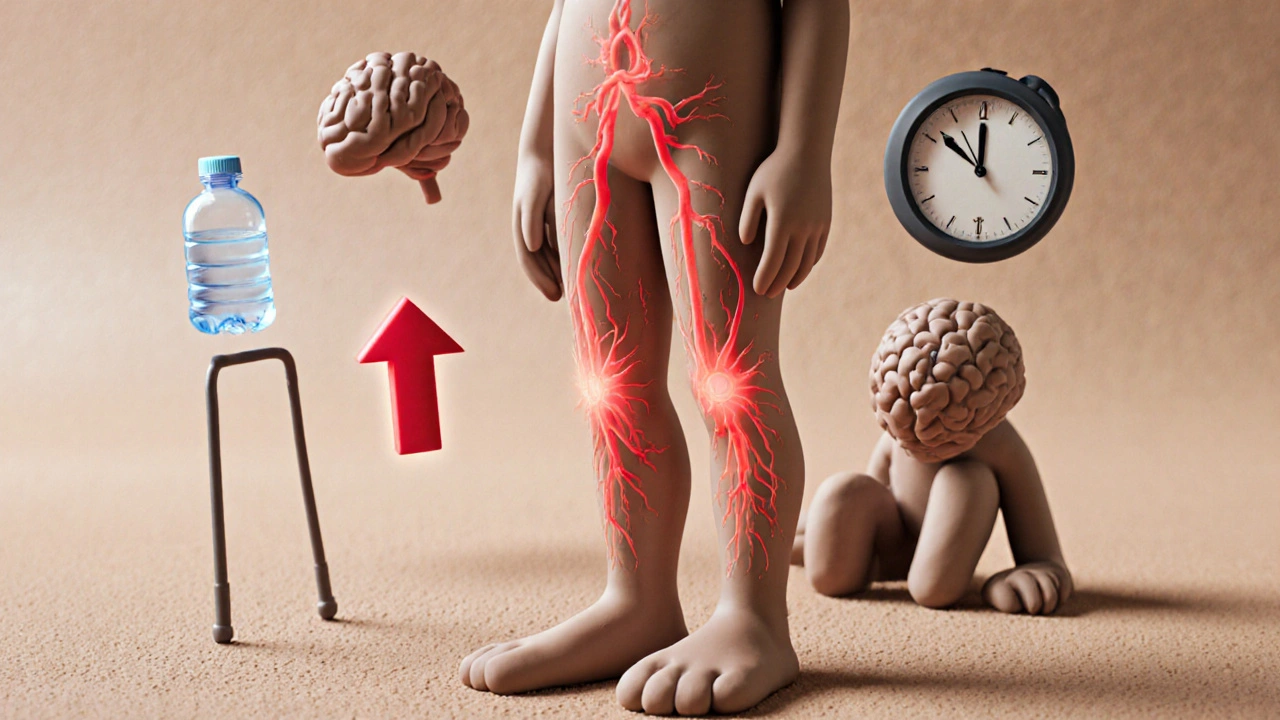Midodrine: What It Is, How It Works, and What You Need to Know
When your blood pressure drops too much standing up—making you dizzy, lightheaded, or even faint—you might be dealing with orthostatic hypotension, a condition where blood pressure falls sharply after standing, often due to nervous system dysfunction. Also known as postural hypotension, it’s not just an old-person problem—it can hit anyone, especially those on blood pressure meds, with diabetes, or with nerve damage. That’s where midodrine, a vasopressor that tightens blood vessels to raise standing blood pressure. It’s not a cure, but it’s one of the few drugs designed specifically to help you stay upright without falling over.
Midodrine works by turning into desglymidodrine in your body, which then activates alpha-1 receptors in your blood vessels. This makes them contract, pushing blood back toward your heart and brain. Unlike stimulants or caffeine, it doesn’t make you jittery—it just gives your circulation a targeted boost when you need it most: when you stand up. It’s taken in doses throughout the day, usually not after 6 PM, because it can keep you awake. Side effects like scalp tingling, goosebumps, or elevated lying-down blood pressure are common, but most people adjust. It’s not for everyone—people with heart disease, high blood pressure while lying down, or thyroid issues should avoid it. And while it’s not a replacement for hydration, compression socks, or salt intake, it’s often the missing piece in managing daily life with chronic low BP.
Related to midodrine are other tools used for autonomic nervous system disorders—like fludrocortisone, a steroid that helps the body hold onto salt and water to increase blood volume, or pyridostigmine, a drug that improves nerve signaling in conditions like POTS. You’ll also see people combining midodrine with lifestyle fixes: increasing fluid intake, wearing compression garments, avoiding large meals, or raising the head of the bed. Some even use off-label stimulants or beta-blockers depending on their diagnosis. The posts below dive into real cases, comparisons, and practical tips from people managing these conditions daily—whether they’re using midodrine, exploring alternatives, or trying to understand why their blood pressure crashes when they stand up.
What you’ll find here aren’t just drug facts—they’re stories from people who’ve lived with this, doctors who’ve treated it, and guides that cut through the noise. Whether you’re newly diagnosed, frustrated with side effects, or just trying to make sense of your symptoms, these posts give you the real picture—not the marketing version.

